 Ania Szremski
Ania Szremski
In Romanian director Radu Jude’s dizzyingly turgid film, there is something severely at stake.

Gabriel Spahiu as Vlad the Impaler in Dracula. Courtesy Cinetic Media.
Dracula, written and directed by Radu Jude,
now playing in theaters
• • •
Does Radu Jude hate us? The Romanian director’s latest, Dracula, drips with contempt for those who would watch it, almost as much as for those who would produce it (Jude has said he made the film only because it was easy to get funding for the concept). This nearly three-hour exhausting provocation is structured by a framing device featuring the admittedly excellent Adonis Tanța (who made his big-screen debut this year in another Jude film, Kontinental ’25) as Jude’s stand-in, a filmmaker struggling to design a commercially viable Dracula movie that would please focus groups. Sitting in a small, crummy room behind a desk with an anachronistic sheaf of handwritten papers and a book of symbols, he turns to the imaginary American-Japanese-made program Dr. AI JUDEX 0.0 for help, speaking directly into the camera as he gives the generative software instructions through his tablet, asking that they please the spectators with sex, nudity, something cool and trendy, maybe a love story, maybe a musical. Jude doesn’t seem to think much of moviegoers’ tastes or capabilities, and has striven to provide an experience to revolt the contemptible viewer.
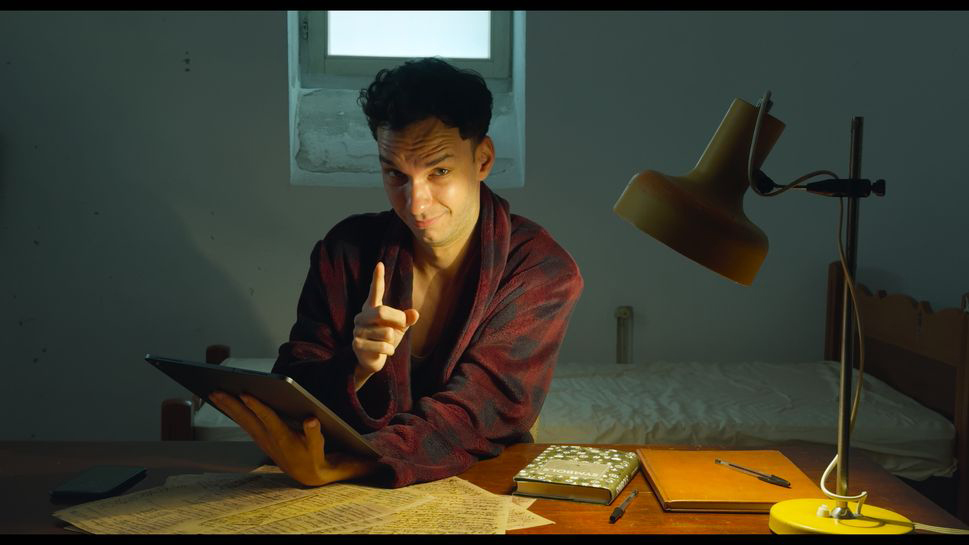
Adonis Tanța as Radu the Director in Dracula. Courtesy Cinetic Media.
The film consists of a series of nested vignettes. There are iPhone-shot scenes of the fictional director’s own vampire movie, involving two “actors” (Vampira, played by the fiercely sexy Oana Maria Zaharia, and the aging and impotent Uncle Sandu, played by the always wonderful, impossibly prolific Romanian screen legend and Jude regular Gabriel Spahiu) indentured to a vampire-themed dinner show–sex tourism brothel. When they try to flee their servitude, the managers of the enterprise (including Tanța again, here as a showboating MC named Adonis) sell the right to impale them to death (with the cooperation of local police) to a marauding horde of sightseers who hunt Vampira and Uncle Sandu through the streets of Romania’s tourism capital, the Transylvanian medieval city of Sighișoara, for the remainder of the film.
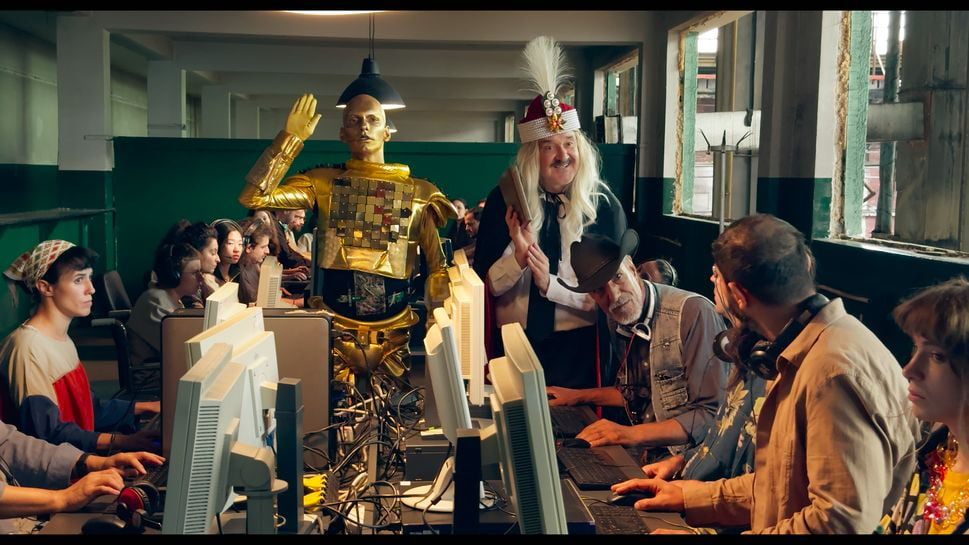
Adonis Tanța as Robot (center left) and Alexandru Dabija as Vlad the Impaler (center right) in Dracula. Courtesy Cinetic Media.
These passages are intercut with fourteen short films (and a coda) produced by the fictional director’s crude experiments with AI. There’s a riff on Murnau’s 1922 Nosferatu that collages invented ads for porn sites, pills, and cultural tours with footage from the classic silent film; an AI grotesquerie overspilling with vagina dentatas and their penile equivalents that reimagines the Romanian-language scene from Francis Ford Coppola’s 1992 Bram Stoker’s Dracula; an extended, thirty-minute reinterpretation of a 1960s story called “Just So,” purportedly by social-realist author Nicolae Velea, about a doomed romance between a dairy deliveryman and a young woman agricultural worker during Romania’s Communist period; a fifty-minute segment based on what Jude bills as the first Romanian vampire novel, 1938’s Vampirul; and a blasphemous retelling of Ion Creangă’s 1878 “The Tale of All Tales,” in which Christ answers a poor farmer’s sarcastic prayer by sowing for him a field of magic disembodied penises, one of which fucks a thieving priest.
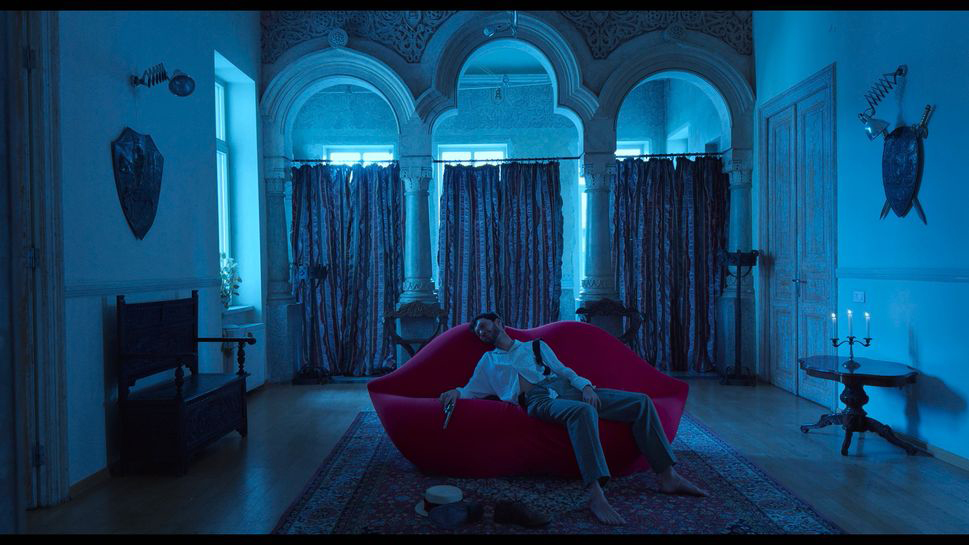
Adonis Tanța as Cociu in Dracula. Courtesy Cinetic Media.
Jude’s film suffers from severe bloat, with its gaseous mix of cinematic techniques, styles, and citations, its hypertextual literary references to the Dracula myth and the many cultural metaphors crafted around the vampiric figure—we get authoritarian ruler as vampire, capitalist fat cat as vampire, racist xenophobe as vampire, AI as vampire, religion as vampire, US imperialism as vampire. That an ensemble cast of twenty plays a total of nearly one hundred roles (with a host of cardboard cutouts occasionally standing in for extras) adds to the dizzying turgidity.
It should be clear by now that I did not like this film. I did not like Jude’s presumptive disregard for my intelligence or taste. I quickly grew weary of his preponderance of dick jokes, which were neither shocking nor funny. I was annoyed by his creeping misogyny (a recurrent attitude that was perhaps most fully on display in his 2012 Everybody in Our Family, in which a henpecking ex-wife drives her former husband to commit outrageous abuse), with women largely playing harpy femme fatales or uptight and virtuous secret sluts, a patriarchal heteronormativity that Jude tries to wink away by having the AI program declare it was engineered for the Eastern European market. I was baffled by the outsize ego suffusing the entire project.
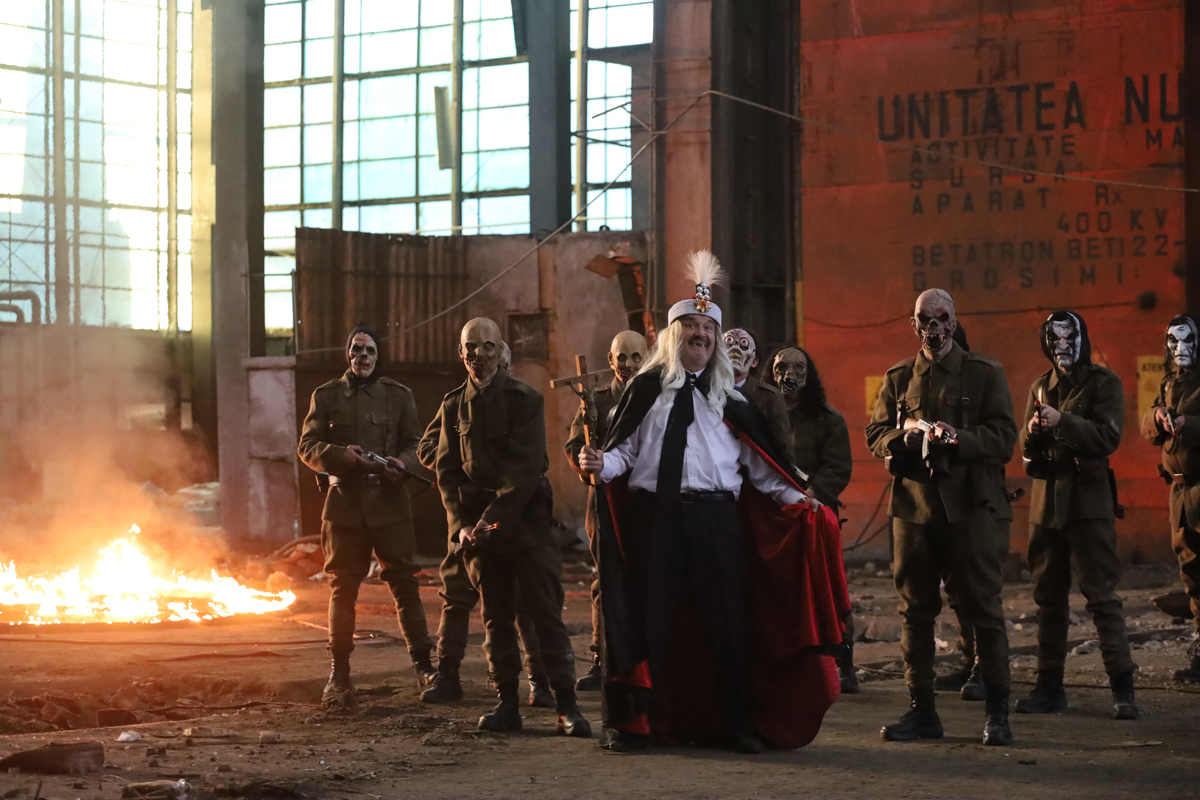
Alexandru Dabija as Vlad the Impaler (center right) and cast in Dracula. Courtesy Cinetic Media.
And yet! As much as Jude exasperates me, he is an artist I keep forgiving. Since his early movies from the 2010s, associated with the miraculous Romanian New Wave (Jude being the loose movement’s enfant terrible), there has always been something severely at stake in his work—he is a filmmaker with a passionately political point of view, and this movie is no different. The character of Dracula, after all, is based on the fifteenth-century ruler Vlad the Impaler, the legendary crusader against the Ottoman Empire, whose ruthlessness and brutality have been culturally enshrined as a testament to Romanian patriotism, and who has been held up as a mascot by the country’s modern far-right political parties. Jude’s Dracula is rife not only with penises but also pointed citations of real-life Romanian monsters from the past and present.
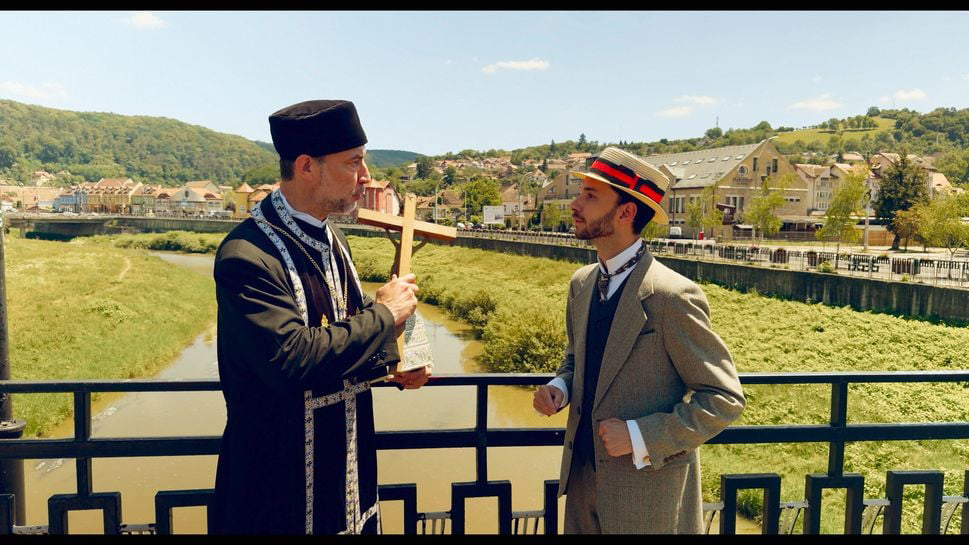
Șerban Pavlu as Dracula Priest and Adonis Tanța as Cociu in Dracula. Courtesy Cinetic Media.
At the vampire sex show, Adonis makes an off-the-cuff joke about Alfred Bulai, a sociology professor detained last year for sexually abusing his female students. There are repeated references to Ion Antonescu, the marshal responsible for engineering the Holocaust in Romania, whose mass murders were the subject of Jude’s 2018 I Do Not Care If We Go Down in History as Barbarians. Christian fascist and influential University of Chicago religion professor Mircea Eliade is quoted, and the rapacious tourists, taking a break from their bloodlusty pursuit of Vampira and Uncle Sandu, launch into a disquisition on the relative merits of torture, holding up CIA black sites hosted in Bucharest as shining examples. Hunky TV and film star Șerban Pavlu, another Jude regular, plays both a vampiric priest and a present-day Vlad the Impaler hoisting a huge Romanian flag around the streets of Sighișoara, filming himself with a selfie-stick for a TikTok video and mugging with tourists while reciting the last stanzas of Mihai Eminescu’s “The Third Letter.” In this poem, which Romanian schoolchildren have long been required to memorize as part of the elementary-school curriculum, the narrator prevails upon the Impaler to return and set the nation to rights: ethnofascism enshrined in early education. Dracula may have tested the limits of my patience, but I still admit some admiration for Jude’s message appearing in an acrostic in the final credits: fuck the fascists.
Ania Szremski is the senior editor of 4Columns.